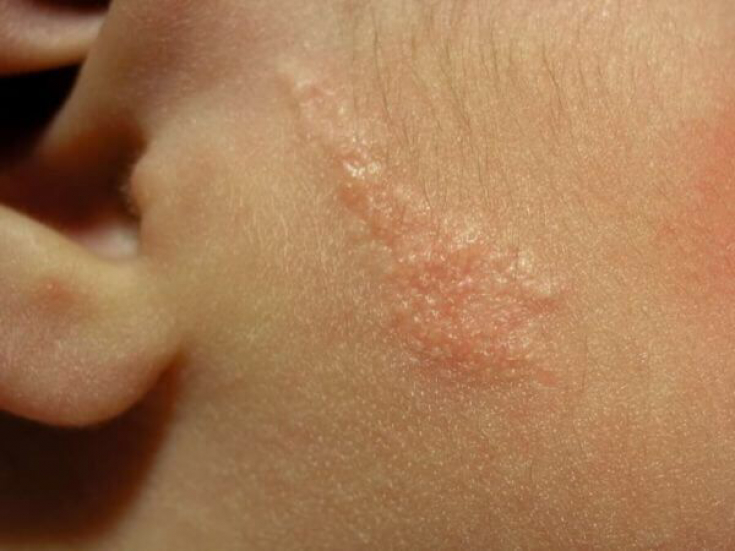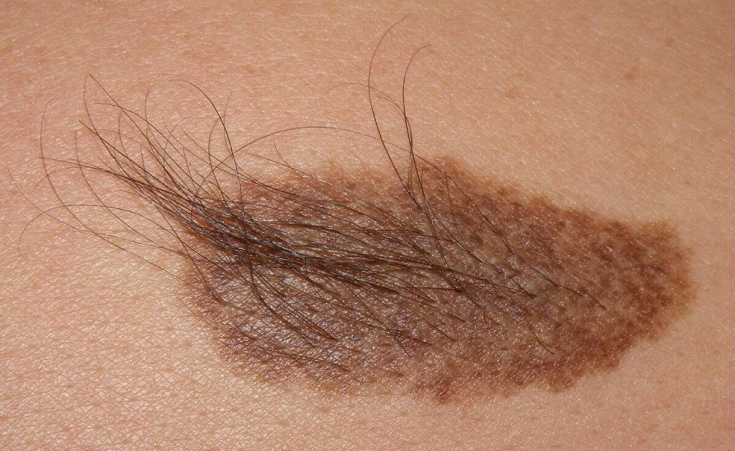Epidermal nevus has an average prevalence of 1-3 cases per 1000 births and is the main motive for referring to dermatologists due to aesthetic complaints and high demand for removal. Because surgical removal is often limited by the size and location of the epidermal nevus, many non-surgical options have been proposed, including cryotherapy, electrocoagulation, dermabrasion, and chemical peels.
Unfortunately, these approaches are inconsistent and carry a high risk of scarring. Lasers have also been proposed for the treatment of various types of epidermal nevus, with encouraging results. In our article on estet-portal.com you can get acquainted with the effectiveness of laser treatment of patients with epidermal nevi.
- Epidermal nevi, investigation and evaluation of the effectiveness of laser treatment
- Causes of relapse after laser treatment of epithermal nevi
- Conclusion
Epidermal nevi, investigation and evaluation of the effectiveness of laser treatment
Epidermal nevi (EN) are a heterogeneous group of hamaromatous skin lesions defined by proliferation of keratinocyte, glandular, follicular, or muscular components of the epidermis. Several components are usually present in a single lesion, but the type is determined according to the predominant cell types. The most common types are:
- verrucous epidermal nevus, also called keratinocytic epidermal nevus;
- nevus of the sebaceous gland.
Follow us on Facebook!
Other types include:
- inflammatory linear verrucous epidermal nevus ;
- Nevus Becker;
- smooth muscle hamartoma;
- comedonal nevus;
- porokeratotic eccrine nevus;
- rounded and velvety epidermal nevus;
- superficial lipomatous nevus.

The study involved 70 people, of which 23 patients were diagnosed with verrucous epidermal nevus, 16 patients with sebaceous nevus, 26 patients with Becker's nevus, 2 patients with inflammatory linear verrucous epidermal nevus, and the remaining 3 people had round and velvety epidermal nevus, superficial lipomatous nevus, and smooth muscle hamartoma.
Nearly all VERUCOSE EPIDERMAL NEVUS have been treated with CO2 or Er:YAG ablative lasers.
#opros#
Among 23 patients with vercose epidermal nevus, only 4 patients (17%) had a moderate result, a poor result, or no result at all. At the same time, 19 patients showed good or excellent results.
Read also: How to differentiate a complex pigmented nevus of the skin.
The remaining 24 patients showed an improvement of more than 50%. In the last follow-up, 14 patients (82%) were still satisfied or very satisfied with the results of the treatment. However, 14 patients (88%) experienced partial or complete relapse at long-term follow-up, but half of them were satisfied with temporary or partial improvement. The follow-up period ranged from 13 to 127 months (average 36 months).
Twenty-six patients diagnosed with Becker's nevus were treated with the QS laser. Only three patients (5.4%) experienced improvement that was mild to moderate, with a complete relapse shortly after for two people, a third patient improved after four QS laser sessions, with a relatively short follow-up of 12 months.
Two cases of inflammatory linear verrucous epidermal nevus showed a 50-89% improvement, mainly with pulsed dye laser (PDL). later.
Read also: Is verrucous nevus dangerous how to handle it.
Finally, a recent case study showed partial improvement in smooth muscle hamartoma erythema with a pulsed dye laser (PDL).
Verrucous epidermal nevus patients showed an improvement of more than half in 82% of cases, mainly with ablative laser.
After a median follow-up of 45 months, the success rate remained high, with 16 good responders out of 22 patients evaluated (72.7%). Accordingly, 78.3% of these patients rated their outcome as good, almost visible, or visible, with a satisfaction rate of 82.6% after mean follow-up of more than three years.
Causes of relapse after laser treatment of epidermal nevi
It is believed that the increased frequency of recurrence and scarring in sebaceous nevi compared with verkuosa epithermal nevus is due to the histological differences between the two. A sebaceous nevus is characterized by a predominantly dermal lesion, the main components of which are sebaceous glands, immature hair follicles, and sweat glands, whereas a nevus epidermis vercosa is a purely epidermal lesion with acanthosis, papillomatosis, and hyperkeratosis.

Thus, verkuosa epidermal nevus can be removed completely or almost completely, while recurrence is inevitable when only the superficial part of the sebaceous nevus is treated.
Read also: The main types of nevi.
However, partial improvement will be achieved, but patients should be warned about possible complications.
For both types of nevi, treatment using aggressive laser settings or attempts to treat the entire thickness of the dermis in one session is not recommended.
To avoid scars, it is advisable to act gradually, first working more superficially and then, if necessary, affecting deeper parts. The general recommendation for dermatologists is to take several approaches to first flatten the lesion and then reduce its size.
Conclusion
This study shows that ablative laser therapy can achieve good cosmetic results in verrucous epidermal nevi with a good to excellent outcome and low recurrence rates. On the contrary, nevus sebaceous glands has a tendency to relapse and develop scars with deep treatment. Given this information, a dermatologist should inform patients about all kinds of complications and the importance of monitoring over time, thereby preventing irreversible complications.
More interesting videos on our YouTube-channel!
Используете ли вы лазер при лечении эпидермальных невусов?







Add a comment